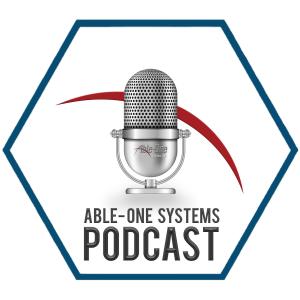Able-One Systems Podcast

IBM i – Then, Now & The Future
Steve Will, chief IBM i architect for IBM, sits down with Dave Perco (Director of Power Server Sales at Able-One Systems) to discuss where the IBM i has been, where it is today and his thoughts on the future of the platform.
0:52 - Back in 2013, IBM celebrated the 25th anniversary of the introduction of the AS 400 and the predecessor to our current Power server. Looking back what was in that original design you feel that created the Power servers longevity?
3:42 - All those features, and components in the original design are they still in today's Power systems running IBM i?
5:02 - Elaborate on that a little bit, a lot has changed in the last 28 years, what has been done to keep Power systems running IBM i, current?
7:06 - Today, what research & development investment is IBM making in Power systems and IBM i?
9:38 - (Strategy) Explain IBM’s roadmap today for Power systems and IBM i?
13:50 - Do you see IBM i marketplace growing worldwide?
16:28 - So IBM has a roadmap for future Power systems and IBM i and the marketplace is growing... do you see this being a viable solution for the next 10, 15, 25 years?
In 2013 IBM celebrated the 25th anniversary of the introduction of the AS 400 and the predecessor to the current Power server. Since its inception, several architectural elements of the AS 400 were, and still are, revolutionary. Even throughout the years where the hardware architecture has changed, you didn’t need a full recreate with IBM i. The reliability, and the longevity of IBM i, remains an everlasting investment protection with a consistent low total cost.
The consistency of IBM i is reflected in the fact that all the features, components and preceding architectural elements in the original design are still there in today’s Power systems running IBM i. As Power moved to having AIX and Linux run alongside IBM i, client server solutions required more components that were incorporated into the operating system. These new capabilities were added over time without disrupting the client base (i.e. the cloud environment in the 2000’s).
To keep IBM i current, IBM has regularly pinpointed what solution providers and what partner channels are demanding. For instance the current trend towards flash storage, a single level storage system, integrated database, open source software and newer applications that look towards virtualization and the cloud.
Today, IBM is making significant investments in research & development for the future of Power systems and IBM i. On the hardware side, modifications are market responsive and necessary for the future of IBM’s reshaping as a solutions based company. IBM’s is currently branding itself as a cognitive/cloud based organization with one of the most important services being Watson. Watson is built on top of much of the same Power hardware that IBM clients use, therefore it is important for IBM to continue investments in order to maintain/update capabilities of Power hardware for current (and future) Watson workloads and IBM i workloads. On the software side, Steve Will describes the global collaborative effort from IBM i teams in Toronto, China and the main base for IBM i in Rochester, Minnesota that are working together to continue to retool IBM i for the future user.
IBM outlines much of its future plan for IBM i in its white paper titled “IBM i Strategy & Roadmap” (link). Major releases for IBM i are planned through until 2027 and ongoing support continues to exist for each major release for 7 year periods, respectively. Furthermore, IBM i teams work on “technology refreshes” on new and the immediately preceding release, twice a year, to incorporate new functions. The IBM i global marketplace continues to grow. On the hardware side, growth is expected to maintain despite the cyclical nature of the mark...






 Visit Podcast Website
Visit Podcast Website RSS Podcast Feed
RSS Podcast Feed Subscribe
Subscribe
 Add to MyCast
Add to MyCast